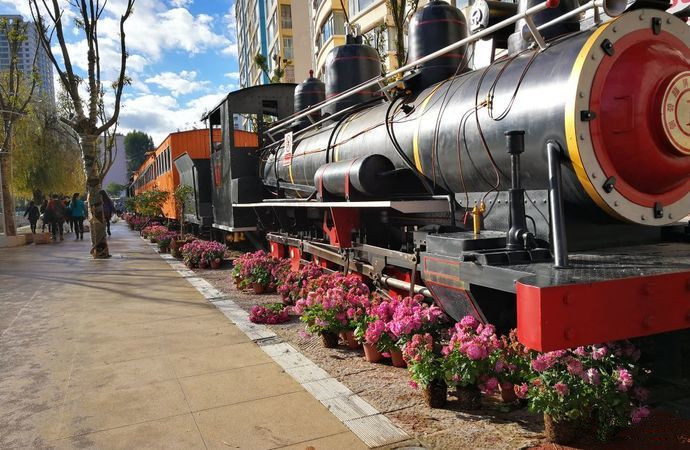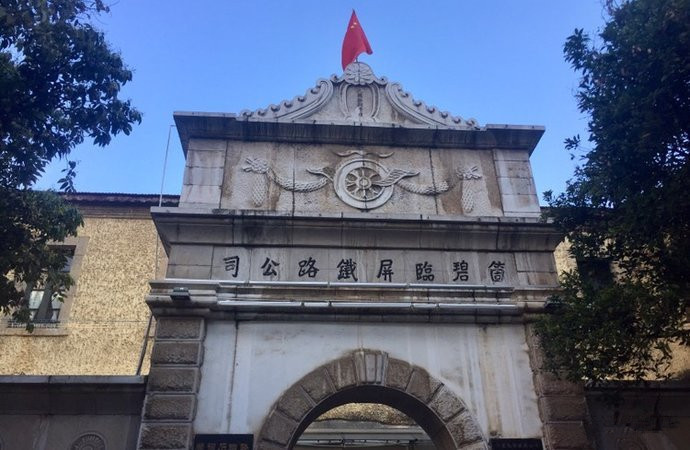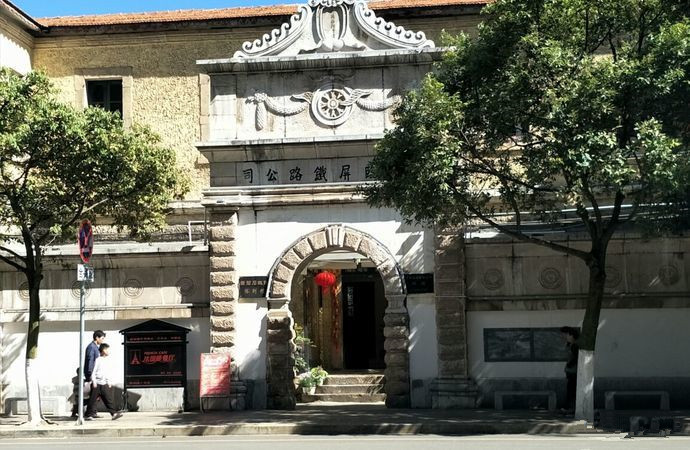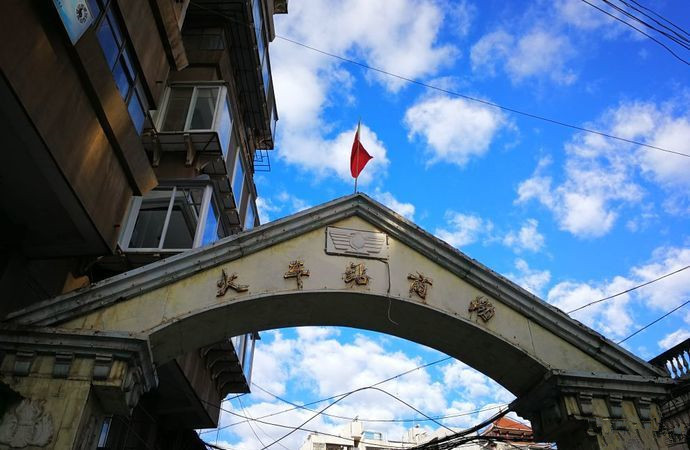
The Former Site of GeBi LinPing Railway Company in Honghe
Chinese Name:个碧临屏铁路公司旧址
English Name: Ge Bi Shi Narrow Gauge Railway in Honghe
The Former Site of GeBi LinPing Railway Company is located 60 meters northeast of the intersection of Jinhu West Road (金湖西路) and Zhongshan Road (中山路).
Overview of GeBi LinPing Railway
The GeBi LinPing Railway, also known as the GeBi Stone Railway (个碧石铁路), began construction in 1915 and took 21 years and 5 months to complete, officially opening in 1936. This railway runs through several areas, including Gejiu (个旧), Bisezhai (碧色寨), Lin’an (临安, also known as Jianshui 建水), and Shiping (石屏), covering a total length of 177 kilometers. Its construction faced numerous hardships, relying on stock issuance to raise funds while simultaneously building and operating the railway until its completion.
Cultural Significance
Today, the Former Site of GeBi LinPing Railway Company has transformed into an important tourist attraction, drawing large numbers of visitors. Additionally, the site has become home to the “French Building” (法国楼) restaurant, a popular spot for locals.
The site holds significant cultural value, not only serving as a connection and complement to the Yunnan-Vietnam Railway (滇越铁路) but also witnessing a century of transportation history and the brilliant chapters of modern industrial civilization in Yunnan. For the people of Shiping, this railway embodies deep national sentiment and the spirit of “seeking change in adversity, daring to be first, valuing integrity and righteousness, and loving one’s country and hometown.” It reflects the dramatic changes and development of Shiping over the past century.
Overview
The Ge Bi Lin Ping Railway Company Old Site is located 60 meters northeast of the intersection of Jinhu West Road (金湖西路) and Zhongshan Road (中山路). The Ge Bi Lin Railway, also known as the Ge Bi Shi Railway, began construction in 1915 and took 21 years and 5 months to complete, officially opening in 1936. This railway connects regions such as Gejiu (个旧), Bisezhai (碧色寨), Lin’an (临安, now known as Jianshui 建水), and Shiping (石屏), spanning a total length of 177 kilometers. Its construction was challenging, relying on stock issuance for funding while operating simultaneously, ultimately leading to the railway’s completion.
Today, the old site has transformed into a significant tourist attraction, drawing numerous visitors. It now houses the “French House” restaurant, a popular spot for locals to gather.
Cultural Significance
The Ge Bi Lin Ping Railway Company Old Site holds immense cultural value. It is not only a connection and supplement to the Yunnan-Vietnam Railway but also a testament to the century-long history of transportation in Yunnan and the achievements of modern industrial civilization. For the people of Shiping, this railway embodies profound national sentiment and reflects the spirit of “seeking change in adversity, daring to be first, valuing honesty and righteousness, and loving one’s country and hometown.” It stands as a witness to the dramatic changes and developmental journey of Shiping over the past century.
Historical Context
The Ge Bi Lin Shi Railway’s surveying began in the second year of the Republic of China (民国), construction started in the fourth year, and it officially opened on October 10, 1936. This railway holds the record for the longest construction time in China and is the smallest railway in the country. It is also the only privately owned railway in China. The line is composed of segments built in sections.
- Elevation: Over 2000 meters
- Annual Cargo Volume: Only 83,000 tons
- Completion Date: October 10, 1936
Railway History
Yunnan’s mining industry has been significant since the Ming and Qing dynasties, with Gejiu’s tin industry experiencing explosive growth after the Yunnan-Vietnam Railway was completed. The demand for tin surged due to rapid development in shipbuilding and machinery in Western countries, leading to Gejiu’s tin being recognized for its superior quality.
Railway Development Background
The rising demand for tin prompted the expansion of mining operations and increased transportation needs. Before the railway’s completion, tin was exported through the Manhao port, taking several days to reach its destination. The opening of the railway reduced travel time drastically, which led to the cessation of slow water transport.
Railway Construction Initiatives
In late 1910, local businessmen, including Liu Xinyuan (刘新元), Guo Bucheng (郭步程), and Huang Shiyun (黄士运), petitioned the provincial governor for railway construction. The political climate following the Xinhai Revolution in 1911 reinforced their resolve. By 1912, local business owners secured funding through stock subscriptions, which ultimately gained governmental support.
Establishment of the Railway Company
The Ge Bi Shi Railway was defined as a privately funded project, which garnered significant public interest. The provincial government showed support by agreeing to co-invest. The “Ge Bi Shi Railway Company” was established in 1913, with funding from local shareholders and a significant loan from the Yunnan-Sichuan Railway Company.
Notable Figures
Chen Heting (陈鹤亭), a key figure in the railway’s construction, was born in 1874 and passed away in 1931. He played a pivotal role in financing and developing the railway, ensuring its completion as China’s only privately owned railway.
Construction and Challenges
The railway was built with a narrow gauge of 6 inches due to political and geographical considerations. The challenging terrain over 2000 meters elevation required careful planning and adjustments in design.
Operational Era
The railway formed a “T” shape, connecting Bisezhai and Gejiu through Jijie, with the Shiping section completing in 1936. The grand opening celebrated the end of a transportation era in southern Yunnan.
Locomotives
The railway’s locomotives were imported from the United States, France, and Germany, with modifications made to meet operational demands.
Transformation and Decline
The years before the Second Sino-Japanese War marked the peak of railway operations, but war significantly disrupted transportation and production. By 1943, the railway transitioned to a military-controlled entity.
Conclusion
In 1990, the railway ceased freight operations, marking the end of its role in Yunnan’s economic and cultural landscape. However, its legacy remains in the hearts of the people, who remember the once-bustling railway.
How to Get There
To reach the Former Site of GeBi LinPing Railway Company, you can take local public transportation or a taxi to the intersection of Jinhu West Road and Zhongshan Road. The site is easily accessible within the city limits.
Travel Tips
- Best Time to Visit: Spring and autumn offer pleasant weather for exploration.
- Local Cuisine: Don’t miss trying local specialties at the “French Building” restaurant.
- Photography: Bring your camera to capture the beautiful architecture and surrounding scenery.
- Guided Tours: Consider joining a guided tour for a more in-depth understanding of the railway’s history and cultural significance.




Location:

 7 Days GolfingTour
7 Days GolfingTour
 8 Days Group Tour
8 Days Group Tour
 8 Days Yunnan Tour
8 Days Yunnan Tour
 7 Days Shangri La Hiking
7 Days Shangri La Hiking
 11 Days Yunnan Tour
11 Days Yunnan Tour
 6 Days Yuanyang Terraces
6 Days Yuanyang Terraces
 11 Days Yunnan Tour
11 Days Yunnan Tour
 8 Days South Yunnan
8 Days South Yunnan
 7 Days Tea Tour
7 Days Tea Tour
 8 Days Muslim Tour
8 Days Muslim Tour
 12 Days Self-Driving
12 Days Self-Driving
 4 Days Haba Climbing
4 Days Haba Climbing
 Tiger Leaping Gorge
Tiger Leaping Gorge
 Stone Forest
Stone Forest
 Yunnan-Tibet
Yunnan-Tibet
 Hani Rice Terraces
Hani Rice Terraces
 Kunming
Kunming
 Lijiang
Lijiang
 Shangri-la
Shangri-la
 Dali
Dali
 XishuangBanna
XishuangBanna
 Honghe
Honghe
 Kunming
Kunming
 Lijiang
Lijiang
 Shangri-la
Shangri-la
 Yuanyang Rice Terraces
Yuanyang Rice Terraces
 Nujiang
Nujiang
 XishuangBanna
XishuangBanna
 Spring City Golf
Spring City Golf
 Snow Mountain Golf
Snow Mountain Golf
 Stone Mountain Golf
Stone Mountain Golf




















